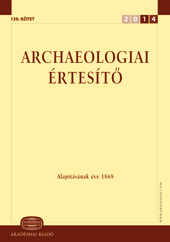A HÁLÓZATELEMZÉS RÉGÉSZETI ALKALMAZÁSÁNAK LEHETŐSÉGEI A KÉSŐ BRONZKORI FÉMMŰVESSÉG TÜKRÉBEN
POTENTIALS OF THE ARCHAEOLOGICAL APPLICATION OF NETWORK ANALYSIS IN THE LIGHT OF LATE BRONZE AGE METALLURGY
Author(s): Gábor VácziSubject(s): History, Archaeology, Cultural history, Social history, Ancient World
Published by: Akadémiai Kiadó
Keywords: Urnfield period; deposition; Transdanubia; cultural interaction; system analysis; Late Bronze Age society;
Summary/Abstract: The bronze hoards of the eastern Urnfield cultural complex, dated between 1250 and 1100 BC, represent one of the largest sets of associated assemblages in the Late Bronze Age of Central Europe, which can be studied according to uniform criteria. The complexity of the interactions established during the Urnfield period of the eastern Alpine region and the Carpathian Basin is reflected by the distribution of individual artefact types and the many combinations in the composition of the hoards. Different levels of interaction can be distinguished in the interaction networks outlined and assessed using a complex network analysis. Communities with a differing social role and social position partook in the creation and maintenance of connections, which determined the diffusion of bronze artefacts and technologies, as well as their consumption and possession, even if to differing extents on each level.
Journal: Archaeologiai Értesítő
- Issue Year: 139/2014
- Issue No: 1
- Page Range: 261-291
- Page Count: 31
- Language: Hungarian
- Content File-PDF

